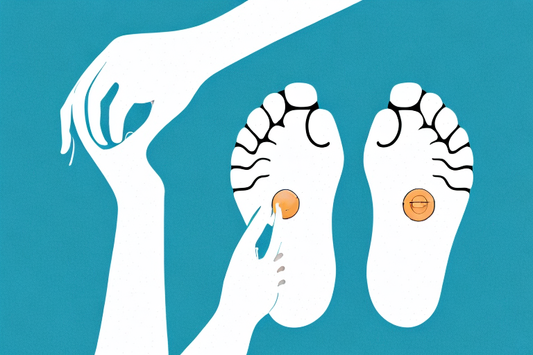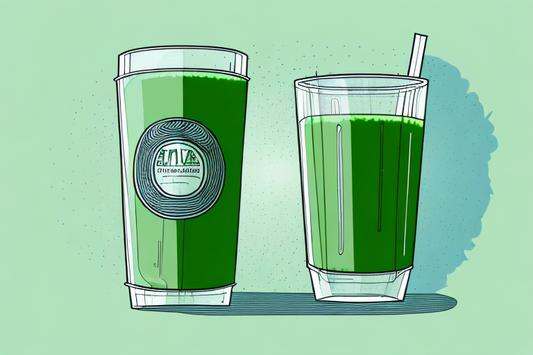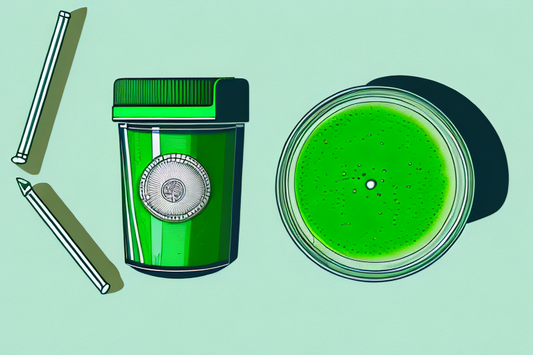7 Easy Tips and Recipes for Using a Keto Diet to Treat Neuropathy
If you or someone you know suffers from neuropathy, you understand the constant pain, numbness, and tingling that can make everyday activities a challenge. While there are many treatment options available, one unique approach to consider is a keto diet. In this article, we will explore how the keto diet can help relieve neuropathy symptoms, and provide practical tips and delicious recipes to help you get started.
Understanding Neuropathy and the Keto Diet Connection
What is Neuropathy?
Neuropathy is a condition where the nerves that carry information from your brain and spinal cord to the rest of your body become damaged. This damage can lead to a variety of symptoms, such as pain, numbness, and tingling in your hands and feet. The condition can be caused by a variety of factors, including diabetes, alcoholism, and chemotherapy.
Neuropathy is a common condition that affects millions of people around the world. It can be a debilitating condition that can greatly impact a person's quality of life. The symptoms of neuropathy can range from mild to severe, and can include burning, stabbing, or shooting pain, as well as numbness and tingling.
How the Keto Diet Can Help with Neuropathy
Research has shown that a keto diet can help alleviate neuropathy symptoms. The diet is high in healthy fats, moderate in protein, and low in carbohydrates. By reducing your carb intake, your body enters a state of ketosis, where it burns fat for fuel instead of glucose. This metabolic shift can reduce inflammation and oxidative stress in the body, which can help reduce neuropathy symptoms.
Many people with neuropathy have found relief through the use of a keto diet. By following a strict ketogenic diet, they have been able to reduce their symptoms and improve their quality of life. The diet is easy to follow and can be customized to fit a person's specific needs and preferences.
The Science Behind the Keto Diet and Neuropathy Relief
Studies have shown that a keto diet can reduce neuropathy symptoms in multiple ways. First, by reducing glucose levels in the body, it can reduce nerve damage caused by high blood sugar levels. Second, the high levels of ketones produced during ketosis can act as an alternative energy source for damaged nerves, helping to repair and regenerate them.
The science behind the ketogenic diet and its ability to alleviate neuropathy symptoms is still being studied. However, the results so far have been promising. Many people with neuropathy have found relief through the use of a keto diet, and the diet is becoming more and more popular as a treatment option for this condition.
Overall, if you are suffering from neuropathy, it may be worth considering a keto diet as a treatment option. Consult with your doctor to see if a ketogenic diet is right for you, and to develop a plan that is tailored to your specific needs and health goals.
Starting Your Keto Journey for Neuropathy Relief
If you suffer from neuropathy, you know how debilitating it can be. The constant pain and tingling can make even the simplest tasks feel impossible. But there is hope. Many people have found relief from neuropathy symptoms by adopting a ketogenic diet.
Setting Realistic Goals
Before embarking on a keto diet, it's important to set realistic goals. Start by consulting with your healthcare provider to ensure that the diet is right for you. They can help you determine if a keto diet is safe for you and provide guidance on how to get started.
Once you've received the green light from your healthcare provider, set achievable goals such as reducing your daily carb intake and increasing healthy fat consumption. Keep in mind that the keto diet is a lifestyle change, and it's important to approach it with patience and consistency. Don't expect overnight results, but instead focus on making small changes that you can sustain over time.
Preparing Your Kitchen and Pantry
Once you've set your goals, it's time to prepare your kitchen and pantry. One of the keys to success on a keto diet is having the right foods on hand. Stock up on healthy fats such as avocado oil, nuts, and seeds, and replace high-carb foods with low-carb alternatives such as zucchini noodles and cauliflower rice. Don't forget to also incorporate low-carb vegetables like spinach and kale, to provide the necessary vitamins and minerals your body needs.
Preparing your meals in advance can also be helpful. This can help you avoid the temptation to reach for unhealthy snacks when you're hungry and short on time. Consider investing in meal prep containers and carving out time each week to prepare your meals for the week ahead.
Tracking Your Macros and Progress
To ensure that you stay on track with your goals, it's important to track your daily macros and progress. Many apps are available to help you track your daily carb, protein, and fat intake, and monitoring your progress can help you make adjustments as needed.
It's also important to listen to your body. While the keto diet can be a powerful tool for improving neuropathy symptoms, it's not a one-size-fits-all solution. Pay attention to how your body responds to the diet and make adjustments as needed.
Remember, the journey to relief from neuropathy symptoms is a marathon, not a sprint. But with patience, consistency, and the right approach, a keto diet can be a powerful tool in your arsenal for managing your symptoms and improving your quality of life.
7 Easy Tips for Successfully Following a Keto Diet
The keto diet is a popular low-carb, high-fat diet that has been shown to help with weight loss and improve overall health. However, starting a new diet can be overwhelming, so here are 7 easy tips to help you successfully follow a keto diet.
Tip 1: Stay Hydrated
One of the most important things you can do on a keto diet is to stay hydrated. The diet can have a diuretic effect, causing your body to excrete more fluids than usual. This can lead to dehydration, which can cause fatigue, headaches, and other symptoms. To avoid this, drink plenty of water throughout the day, and consider adding electrolytes like sodium and potassium to your diet to maintain proper hydration levels.
Tip 2: Focus on Healthy Fats
The key to a successful keto diet is to focus on healthy fats. Include plenty of saturated fats like grass-fed butter and coconut oil, as well as monounsaturated fats like avocado and olive oil. Don't be afraid to also incorporate healthy omega-3 fats like wild-caught salmon and chia seeds. Healthy fats provide energy and help you feel full, making it easier to stick to your diet.
Tip 3: Don't Fear Protein
While the keto diet is known for being high in fat, don't forget to also incorporate protein into your diet. Protein is essential for muscle growth and repair, and can help keep you feeling full and satiated. Include protein sources like grass-fed beef, pastured chicken, and eggs. Just be sure to keep your protein intake moderate, as too much protein can kick you out of ketosis.
Tip 4: Incorporate Low-Carb Vegetables
Low-carb vegetables like spinach, kale, and broccoli provide essential vitamins and minerals, as well as fiber to keep you feeling full and satisfied. Don't skip out on these important components of a healthy diet. They also add variety to your meals and can help prevent boredom with your food choices.
Tip 5: Plan Your Meals and Snacks
Planning ahead is key when following a keto diet. Plan your meals and snacks in advance to ensure that you have healthy options easily available. This will help prevent temptation to reach for high-carb snacks or meals. It can also save you time and money by avoiding last-minute fast food runs or impulse purchases at the grocery store.
Tip 6: Manage Your Electrolytes
As mentioned earlier, the keto diet can have a diuretic effect, leading to a loss of electrolytes. Electrolytes are essential minerals that help your body function properly, and a lack of them can cause muscle cramps, fatigue, and other symptoms. Manage your electrolyte levels by adding sodium, potassium, and magnesium to your diet. Consider supplements to help you maintain proper levels.
Tip 7: Be Patient and Consistent
Remember that the keto diet is a lifestyle change, and it may take time to see results. Be patient, and consistent, and trust in the process. If you're struggling, don't be afraid to reach out for support from others in the keto community. There are many online forums, social media groups, and local meetups where you can connect with others who are also following a keto diet. Sharing your experiences and getting advice from others can help you stay motivated and on track.
By following these 7 easy tips, you can successfully follow a keto diet and reap the many health benefits it has to offer. Remember to stay hydrated, focus on healthy fats, include protein and low-carb vegetables in your diet, plan your meals and snacks, manage your electrolytes, and be patient and consistent. With time and dedication, you can achieve your health and weight loss goals on a keto diet.
Delicious Keto Recipes to Help Treat Neuropathy
Neuropathy is a condition that affects the nerves in the body, causing pain, numbness, and tingling sensations. While there are many treatments available, some people find that following a ketogenic diet can help alleviate their symptoms. The following recipes are not only keto-friendly but also packed with nutrients to help support nerve health.
Keto Breakfast: Spinach and Feta Frittata
Starting your day with a nutrient-dense meal is crucial, especially when dealing with neuropathy. This spinach and feta frittata is not only delicious but also packed with protein and healthy fats to keep you satiated throughout the morning.
- Heat oven to 375°F.
- Melt butter in oven-safe skillet over medium heat.
- Add spinach and cook until wilted.
- Beat eggs and pour over spinach.
- Add crumbled feta cheese.
- Bake in oven for 10-15 minutes or until set.
If you want to add more flavor to your frittata, try adding some chopped sun-dried tomatoes or sliced mushrooms. You can also serve it with a side of sliced avocado for some extra healthy fats.
Keto Lunch: Grilled Chicken Salad with Avocado Dressing
Salads are a great way to pack in a variety of nutrients and flavors into one meal. This grilled chicken salad with avocado dressing is not only refreshing but also packed with healthy fats and protein to keep you energized throughout the day.
- Grill chicken breast until cooked through.
- Prepare salad with mixed greens, cucumber, and cherry tomatoes.
- Make dressing by blending avocado, lime juice, olive oil, and salt and pepper.
- Toss salad with dressing and top with sliced chicken.
If you want to add some extra crunch to your salad, try adding some toasted nuts or seeds. You can also swap out the chicken for grilled shrimp or tofu for a vegetarian option.
Keto Dinner: Zucchini Noodles with Creamy Garlic Shrimp
When it comes to comforting meals, nothing beats a warm bowl of pasta. This zucchini noodles with creamy garlic shrimp recipe is a keto-friendly alternative to traditional pasta dishes, and it's packed with flavor and nutrients.
- Spiralize zucchini noodles and set aside.
- Heat olive oil in skillet over medium heat.
- Add minced garlic and cook until fragrant.
- Add shrimp and cook until pink.
- Add heavy cream, parmesan cheese, and salt and pepper, and cook until sauce thickens.
- Toss zucchini noodles with sauce and shrimp mixture.
If you don't have a spiralizer, you can use a vegetable peeler to create long, thin strips of zucchini. You can also add some extra veggies to the dish, such as sliced bell peppers or mushrooms.
Keto Snack: Coconut Almond Fat Bombs
Snacking on the keto diet can be challenging, but these coconut almond fat bombs are the perfect solution. They're packed with healthy fats and protein to keep you satisfied between meals.
- Melt coconut oil in microwave or on stovetop.
- Combine melted coconut oil with almond butter, unsweetened shredded coconut, and stevia to taste.
- Pour mixture into silicone mold and place in freezer until solid.
- Remove from mold and store in the fridge.
If you want to switch up the flavor of your fat bombs, try adding some cocoa powder or vanilla extract. You can also roll them in chopped nuts or coconut flakes for some extra texture.
Keto Dessert: Chocolate Avocado Mousse
Just because you're following a keto diet doesn't mean you have to give up dessert. This chocolate avocado mousse is not only delicious but also packed with healthy fats and antioxidants.
- Blend avocado, unsweetened cocoa powder, almond milk, and stevia until smooth.
- Chill mixture in the fridge for at least an hour.
- Top with whipped cream and enjoy!
If you want to add some extra flavor to your mousse, try adding some cinnamon or espresso powder. You can also top it with some chopped nuts or berries for some extra texture.
Overcoming Common Challenges on the Keto Diet
The ketogenic diet, or keto diet, is a low-carb, high-fat diet that has gained popularity in recent years due to its potential health benefits. While many people have seen success with this diet, there are still some common challenges that can make it difficult to stick to. Here are some tips for overcoming those challenges:
Dealing with the Keto Flu
One of the most common side effects of entering ketosis is the keto flu. This can cause symptoms such as headaches, nausea, and fatigue. The good news is that the symptoms typically only last a few days. To help overcome the keto flu, there are a few things you can do:
- Stay hydrated: Drinking plenty of water can help flush out toxins and reduce symptoms.
- Add more salt to your diet: When you cut back on carbs, your body also tends to excrete more sodium. Adding more salt to your diet can help replenish your sodium levels and reduce symptoms.
- Give your body time to adjust: It can take a few days for your body to fully adjust to the ketogenic diet. Be patient and give yourself time to adapt.
Dining Out and Social Events
Dining out and attending social events can be tricky when you're on a keto diet. Here are some tips to help you navigate these situations:
- Do your research ahead of time: Look up the menu online and find keto-friendly options before you go. Many restaurants now offer low-carb options, so don't be afraid to ask.
- Ask for modifications: Don't be afraid to ask for modifications to your meal. For example, you can ask for a burger without the bun or a salad without croutons.
- Bring your own snacks: If you're going to an event where you're not sure what food will be available, bring your own keto-friendly snacks to munch on.
- Offer to bring a dish to share: If you're attending a potluck or other event where you're expected to bring a dish, offer to bring a keto-friendly option that you can enjoy.
Staying Motivated and Accountable
Staying motivated and accountable when following a keto diet can be challenging. Here are some tips to help you stay on track:
- Join a support group: There are many online communities and support groups for people following a keto diet. Joining one of these groups can help you stay motivated and get advice from others who are going through the same thing.
- Find an accountability partner: Partnering up with someone who is also following a keto diet can help keep you accountable and motivated.
- Celebrate your successes: No matter how small, celebrate your successes along the way. This will help keep you motivated and focused on your goals.
- Focus on the health benefits: Remember why you started the keto diet in the first place. Focusing on the potential health benefits, such as weight loss and improved energy levels, can help keep you motivated.
By following these tips, you can overcome the common challenges of the keto diet and stay on track towards achieving your health goals.
Monitoring Your Neuropathy Progress on the Keto Diet
Keeping a Symptom Journal
Neuropathy is a condition that affects the nervous system, causing tingling, numbness, and pain in the hands and feet. The keto diet has been shown to help alleviate these symptoms by reducing inflammation and improving blood sugar control. However, it's important to monitor your progress to ensure that the diet is working for you.
To monitor your progress on the keto diet, consider keeping a symptom journal. Note any changes in your neuropathy symptoms, as well as any other changes in your health, mood, or energy levels. This will help you identify patterns and make adjustments as needed.
For example, if you notice that your neuropathy symptoms are improving but you're experiencing low energy levels, you may need to adjust your macronutrient intake to ensure that you're getting enough calories. Alternatively, if you're experiencing digestive issues, you may need to adjust your fiber intake or try different types of keto-friendly foods.
Regular Check-Ins with Your Healthcare Provider
While the keto diet can be a powerful tool for managing neuropathy symptoms, it's important to work with your healthcare provider to ensure that the diet is safe and effective for you. Regular check-ins with your healthcare provider are important when following a keto diet. They can monitor any changes in your health, and provide guidance on adjusting your diet as needed.
Your healthcare provider can also help you identify any potential nutrient deficiencies and recommend supplements or dietary changes to address them. For example, if you're not getting enough magnesium on the keto diet, your healthcare provider may recommend a magnesium supplement to help alleviate neuropathy symptoms.
Celebrating Your Successes and Adjusting as Needed
The keto diet can be challenging, but it's important to celebrate your successes along the way. Remember that the diet is a lifestyle change, and it's important to adjust as needed to fit your individual needs and preferences. Monitor any changes in your symptoms, and don't be afraid to consult with your healthcare provider for guidance.
For example, if you've been following the keto diet for a few weeks and notice that your neuropathy symptoms are improving, celebrate your success! Treat yourself to a keto-friendly dessert or indulge in a favorite keto-friendly meal. However, if you notice that your symptoms are worsening or you're experiencing other health issues, it's important to adjust your diet and seek guidance from your healthcare provider.
By following these easy tips and delicious recipes, you can successfully use a keto diet to help treat your neuropathy symptoms. Remember to approach the diet with patience and consistency, and celebrate your successes along the way. Here's to a healthier, happier you!





